
| Publisher: | Vintage | |
| Genre: | Psychological, Classics, General, Fiction, Historical | |
| ISBN: | 9780525434153 | |
| Pub Date: | November 2018 | |
| Price: | $15 |
| Fiction |
by Yukio Mishima, trans. by Andrew Clare
One of the greatest Japanese writers of the 20th century, Yukio Mishima is known to most Westerners for his Sea of Fertility tetralogy and his shocking death by ritualistic suicide in 1970. Translated into English for the first time, The Frolic of the Beasts is a short novel from 1961 and a takeoff of Japanese Noh theater (a form of art Mishima loved). A tale of lust, violence and acceptance, the story stands as another example of his genius.
The Frolic of the Beasts is nominally about a love triangle. A young man, Koji, begins an affair with his boss's wife, Yuko, leading to a violent encounter where he cripples his employer. Sent to jail for two years, Koji is then taken in by Yuko and Ippei, the husband who is now a shell of his former self. But Mishima isn't interested in a battle of wills between his male characters; instead he focuses on how each person in his triad makes the lives of the others unbearable. Powerless to break away from the strange relationship they've created, Koji, Yuko and Ippei start down a road that leads to further bloodshed.
Much of Mishima's work has a bitter, almost nihilistic quality to it, and The Frolic of the Beasts is no exception. The novel uses its short running time to explore the ways humans create lies in order to prop up their worldviews, and how issues of sex and power can fray or solidify those lies. The Frolic of the Beasts may be a "lesser work" in Mishima's oeuvre, but it's yet another example of his mastery. --Noah Cruickshank, adult engagement manager, the Field Museum, Chicago, Ill.

| Publisher: | Ecco | |
| Genre: | Urban, Family Life, General, Literary, Coming of Age, Fiction, Historical | |
| ISBN: | 9780062258199 | |
| Pub Date: | December 2018 | |
| Price: | $26.99 |
| Fiction |
by Tom Barbash
Set in New York City in 1979 and 1980, the "Dakota" of Tom Barbash's second novel is the famed Upper West Side apartment building at the corner of 72nd Street and Central Park West. That building is home to comedian and talk show host Reginald "Buddy" Winters, his wife, Emily, and their sons, Anton and Kip.
Twenty-three-year-old Anton, the novel's narrator, thinks he's there only temporarily, after a near-fatal bout of illness while serving in the Peace Corps. And he isn't the only member of the family in recovery mode. Buddy, who hosted a late-night talk show, is striving to rebuild his career after a nervous breakdown that featured an on-air walk-off. To make the Winters' lives even more interesting, two floors above them live their friends John Lennon and Yoko Ono. It's been nearly five years since John's last album, and he's in the midst of his own creative lull.
Through Anton's observant eyes, Barbash (The Last Good Chance) trails these characters around New York City in one of its dodgier eras. The smart and self-aware narrator becomes a creative muse to both Buddy and John, who is on the cusp of recording his final album, Double Fantasy. Hovering over all of this is a reader's knowledge of the tragedy that will occur at the Dakota on the night of December 8, 1980.
The Dakota Winters is a refreshingly candid look at the power of celebrity and the sometimes terrifying price it exacts. --Harvey Freedenberg, freelance reviewer

| Publisher: | Akashic | |
| Genre: | International Mystery & Crime, Collections & Anthologies, Mystery & Detective, Anthologies (multiple authors), Fiction, Noir | |
| ISBN: | 9781617756597 | |
| Pub Date: | November 2018 | |
| Price: | $15.95 |
| Mystery & Thriller |
by Sam Wiebe, editor
A common trap of the themed anthology is the inclusion of subpar writing to flesh out the volume. Vancouver Noir, however, book number 90-something in Akashic's redoubtable regional noir series, generally keeps its quality as high as its characters' moral standards are low.
Don't expect to root for the everyman in the film noir tradition: most of Vancouver Noir's 14 stories are from the perspective of protagonists with broken moral compasses. In Dietrich Kalteis's "Bottom Dollar," an ex-con decides to enact revenge on the gangster who fired him. In S.G. Wong's "Survivors' Pension," an elderly Chinese Canadian woman supplements her pension by faking accidents for the insurance money. In R.M. Greenaway's "The Threshold," a photographer waits until he gets the perfect shot before calling 911 to report that he's happened upon a dying man. Co-starring in every story is the stratified, changed and still-changing titular city. A local grouses that Greektown has become Yuppietown. Laments another character: "Everyone in the city seems to have forgotten South Cambie exists." Another wonders: "What still remained after gentrification, real estate crises, countless waves of new arrivals?"
That's not a question applicable only to Vancouver, of course. In his introduction, editor and contributor Sam Wiebe describes Vancouver as "a city under siege by drugs, poverty, racism, colonialism, violence directed at women. In other words, a city like any other." True, but Vancouver Noir's frequent references to the water do earmark it as a city that offers a great place to dump a body. --Nell Beram, author and freelance writer
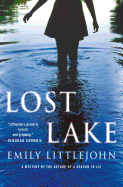
| Publisher: | Minotaur Books | |
| Genre: | Police Procedural, Mystery & Detective, Fiction, Women Sleuths | |
| ISBN: | 9781250178305 | |
| Pub Date: | November 2018 | |
| Price: | $27.99 |
| Mystery & Thriller |
by Emily Littlejohn
Emily Littlejohn impresses once again with the third entry in her mystery series featuring Deputy Gemma Monroe. In Lost Lake, Gemma and her team are flummoxed by the disappearance of a camper in the Colorado Rockies. This is followed by the murder of the missing woman's co-worker and the theft of a valuable diary from their employer, the Cedar Valley History Museum.
The missing woman's fellow campers and the murder victim's family are all in the suspect pool, which is expanded to frustrating levels by the stolen diary. Written by one of the town's founders, it allegedly contains clues to the location of historic gold mines for which any number of people might kill.
Struggling with the emotions elicited by working tragic cases and trying to balance police work with her fiancé and six-month-old daughter at home, Gemma's perspective is a refreshing take on the theme that a career, partner and child constitute "having it all." Littlejohn instead forges steadfastly and candidly into the truth that life is messy. Within the chaos, the small details bring even minor characters (e.g., fabulous nanny Clementine) to vivid life.
As in her debut, Inherit the Bones, Littlejohn herds a multitude of professional and personal plot arcs into one neat package without loose ends. She expands on a solid foundation of diverse characters from which hopefully she can mine material for further additions to this fine series. --Lauren O'Brien of Malcolm Avenue Review

| Publisher: | Orbit | |
| Genre: | Urban, Collections & Anthologies, Epic, Short Stories (single author), Fantasy, Alien Contact, Fiction, Science Fiction | |
| ISBN: | 9780316491341 | |
| Pub Date: | November 2018 | |
| Price: | $26 |
| Starred | Science Fiction & Fantasy |
by N.K. Jemisin
In the introduction to her first collection of short stories, Hugo Award winner N.K. Jemisin addresses the role of short story writing in her development as a writer. She explains: "Shorts gave me space to experiment with unusual plots and story forms--future tense, epistolic format, black characters." The 22 stories here (four of which have not been published before) are a testament to this experimental style. They range from a few pages to a few dozen pages; narrative perspective shifts from first person to third person to a string of e-mail correspondence; the settings range from worlds very much like our own to future realms almost unrecognizable.
In "The Ones Who Stay and Fight," the narrator asks the reader to imagine a world where humanity is recognized in every citizen. In "The You Train," a commuter flirts with long-retired and not-yet-invented subway lines in what feels like modern-day New York. "Cuisine des Mémoires" introduces a restaurant that perfectly re-creates dishes based on diners' memories; humans act as hosts for their machine-like "masters" in "Walking Awake"; a high-achieving student considers the cost of being the best in her class in "Valedictorian."
The risk with any collection of short science fiction is the sheer exhaustion that can come from moving among diverse and varied worlds. But Jemisin is a master of the "quick hook and deep character," to use her own words, and as such, How Long 'Til Black Future Month? never feels tiresome. Quite the opposite, in fact; the collection is energizing in the way the best science fiction aims to be, forcing readers to look back on the "real" world with new and eager eyes. --Kerry McHugh, blogger at Entomology of a Bookworm
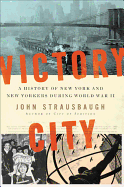
| Publisher: | Twelve | |
| Genre: | United States, State & Local - General, Social History, 20th Century, History, State & Local - Middle Atlantic, Military, World War II | |
| ISBN: | 9781455567485 | |
| Pub Date: | December 2018 | |
| Price: | $30 |
| History |
by John Strausbaugh
John Strausbaugh (The Village, City of Sedition) captures important and formative years of New York City in his sweeping historical account, Victory City: A History of New York and New Yorkers During World War II.
With lively prose, Strausbaugh sets the scene, both intimate and vast, of the city before, during and after the war. The book features notable historical figures like Franklin Roosevelt and Fiorello LaGuardia, but also looks at broader movements. As Nazism spread in Europe before American involvement, New York was a hotbed of Hitler and Mussolini sympathizers, Communists, pacifists, isolationists and even spies. In addition, Strausbaugh sheds light on various marginalized groups, including blacks, who were discriminated against in the armed forces, and women, who became essential in the war effort.
When the United States entered the war, New York became a crucial location. Strausbaugh paints an eerie picture as the city's lights were dimmed to deter German U-boats off the Atlantic coastline. But the city itself was bustling. A little slow to reap the benefits of mass mobilization, New York eventually transformed into a powerhouse of wartime industrialization. Besides factories, it contributed in other ways. Scientists in the aptly named Manhattan Project met there to begin research on atomic weapons. Madison Avenue ad men prepared pitches for war propaganda to boost morale. The new United Nations headquarters was located there. By the time the war ended, New York was christened the "world capital," as many other major cities around the world had been destroyed.
Victory City thoroughly illuminates New York's role during a pivotal moment in world history. Highly recommended for history buffs. --Scott Neuffer, writer, poet, editor of trampset
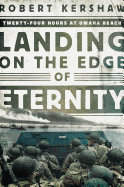
| Publisher: | Pegasus | |
| Genre: | United States, 20th Century, History, Military, World War II | |
| ISBN: | 9781681778662 | |
| Pub Date: | November 2018 | |
| Price: | $27.95 |
| History |
by Robert Kershaw
On the morning of June 6, 1944, American infantry landed at Plage d'Or on the coast of Normandy, an area designated Omaha Beach by Allied planners. It was just one of several amphibious assaults, paratrooper drops and air/naval bombardments that marked the D-Day invasion of Nazi-occupied France. But of the five major beach landings, Omaha was by far the worst.
On the German side, a mediocre garrison had been recently replaced by veteran troops, and these forces occupied formidable positions. Omaha Beach, at four miles long, was penned in on either end by sheer cliffs and along the center by steep bluffs. The only way off the beach, besides summiting those obstacles, was through five gaps, some with roads, leading inland to small villages. The Germans concentrated their defense on these passes. During the previous years of occupation, they had constructed huge concrete strongpoints with interlocking and flanking fields of fire. These, plus an obstacle belt in the surf, minefields and pre-sighted artillery, effectively stopped the first wave of American attackers.
In Landing on the Edge of Eternity, former paratrooper and current military historian Robert Kershaw gives a thrilling narrative of the longest day's most trying hours. He switches deftly between command and unit level on both sides, with glimpses of the destruction wrought on French civilians. Kershaw clarifies and expands an event made even more famous by Saving Private Ryan's opening scene, which accurately reflects the violence encountered by the first wave but simplifies the terrain and course of battle. This is a visceral account of apparent defeat, ultimate victory and how the United States Army sustained more than 2,400 casualties on a single beach in one day. --Tobias Mutter, freelance reviewer

| Publisher: | Holt | |
| Genre: | Life Sciences, Agriculture & Food, Nutrition, Science, Health & Fitness, Human Anatomy & Physiology, Diet & Nutrition, Social Science, Customs & Traditions | |
| ISBN: | 9781250120984 | |
| Pub Date: | November 2018 | |
| Price: | $28 |
| Social Science |
by Virginia Sole-Smith
Good food, bad food, right food, wrong food. For many people, external pressures and ideologies influence how they eat--so much so that they can lose track of what their bodies are telling them. Virginia Sole-Smith, a writer and editor, began to re-evaluate her ideas about food when her baby daughter, Violet, suffered a medical trauma that made her stop eating for two years. The Eating Instinct is her memoir of this experience, given broader context by her research and interviews. "Violet taught me that eating well cannot be about following rules; it has to be about trusting our own instincts, which value safety, comfort and pleasure just as much as nutrition, and sometimes more."
We search for a perfect set of rules, "a way to feed ourselves that... feels simple and right. That doesn't make us feel guilty about everything we put into our bodies." But Sole-Smith discovers that the wellness and nutrition professionals we look to are as susceptible to diet culture as the rest of us, and often struggle with their own disordered eating. Though her emphasis is on the experiences of women, Sole-Smith explores U.S. food culture across lines of class and race. Restrictive diets, the popularity of weight-loss surgery and fads for "clean eating" and "detoxing" are among her targets.
To demand a program from her would be to miss her point, but if Sole-Smith has any advice in conclusion, it is to take a risk and trust yourself more with food. --Sara Catterall

| Publisher: | BenBella Books | |
| Genre: | Quantum Theory, Atomic & Molecular, Science, Physics | |
| ISBN: | 9781946885357 | |
| Pub Date: | December 2018 | |
| Price: | $16.95 |
| Starred | Science |
by Chad Orzel
In Breakfast with Einstein: The Exotic Physics of Everyday Objects, physicist and professor Chad Orzel (How to Teach Quantum Physics to Your Dog) continues to make quantum physics not only accessible, but immensely enjoyable for non-scientists. "[It] turns out that our everyday world is profoundly influenced by the 'exotic' and 'abstract' phenomena of quantum physics," Orzel declares. And in each chapter he explains the science behind a particular quantum marvel and connects it to an everyday occurrence or object.
He teaches us, for example, how the "dual particle and wave nature of light" are harnessed in digital cameras to produce vivid photos, and how quantum experiments during World War II led to the development of the laser and, later, the Internet. In one amusing chapter, we learn that sharing cat pictures over the Internet has a deeper connection to Schrödinger's cat, one of the most famous physics thought puzzles, than most people realize. Orzel's explanations are sophisticated enough to keep the interest of amateur scientists but also clear enough to fascinate the novice.
Perhaps most impressive is Orzel's talent for captivating storytelling. Throughout the book he takes short but absorbing detours into the annals of scientific history, where the work of long-dead scientists comes alive. In a chapter on the quantum nature of scent, for instance, he relays the origin story of the periodic table--one surprisingly rife with twists and turns. Thought provoking and well written, Breakfast with Einstein is a deliciously fun addition to scientific literature for general audiences. --Amy Brady, freelance writer and editor
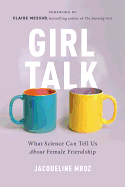
| Publisher: | Seal Press/Perseus | |
| Genre: | Family & Relationships, Women, Friendship, Psychology, Research, History, Interpersonal Relations, Social Science | |
| ISBN: | 9781580057677 | |
| Pub Date: | November 2018 | |
| Price: | $16.99 |
| Science |
by Jacqueline Mroz
In Girl Talk, New York Times science writer Jacqueline Mroz (Scattered Seeds) delves into the background, benefits, challenges and specificity of platonic relationships between women, looking at female friendship across history, culture and age. Mroz employs reportage from scientific studies and interviews with anthropologists, psychologists and neuroscientists, as well as anecdotes from sources and her own personal stories.
She uncovers biological, evolutionary and social factors that help explain why women's friendships are different than men's. For example, female hormones enhance connections in the communications area of the brain, so women tend to be better at expressing emotion and recognizing other people's feelings. Throughout history, women often lived with their in-laws after marriage, so they'd exhibit submissiveness and vulnerability, which increased empathy in their new female relatives. And in the 18th century, the new popularity of novels shaped women's understanding of relationships and people in real life.
Mroz notes how different cultures view friendship; for example, Koreans forge deep, lifelong connections, and they are more likely to intervene in their friends' lives than Americans are. She also explores the health benefits of friendship, how technology impacts these relationships and how friend breakups can cause more grief than ending a romance.
Mroz takes on the difficult but important task of understanding the nuances of friendship through scientific study. Girl Talk takes the bonds between women seriously, and offers a compelling and necessary look at some of the most vital interactions in a woman's life. --Katy Hershberger, freelance writer and bookseller
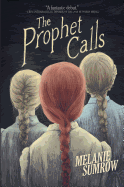
| Publisher: | Little Bee Books | |
| Genre: | Music, Family, General, Social Themes, Religion & Faith, Juvenile Fiction, Performing Arts | |
| ISBN: | 9781499807554 | |
| Pub Date: | November 2018 | |
| Price: | $16.99 |
| Starred | Children's & Young Adult |
by Melanie Sumrow
Thirteen-year-old Gentry Forrester loves music and playing her violin more than anything else, and she hopes to perform with her brother, Tanner, in the Santa Fe Music Festival. She and her 21 siblings live in the small polygamist community of Watchful, N.Mex., where they dutifully await (and follow) the commands from God handed down through the Prophet, who calls weekly from prison. Since Gentry just turned 13, it's time to prepare for her future as a wife and mother. But Gentry has her misgivings: "I know it's wrong," she thinks, "but I sometimes wonder if that's enough for me."
Then, the joy she finds in music is stolen when the Prophet proclaims that outside influences, including music, must be cut off, and that women are no longer allowed to leave Watchful. Gentry wants to be good and follow the Prophet, but as her life changes drastically, she questions why all the things that make her happy are forbidden.
The Prophet Calls, Melanie Sumrow's debut, is a sensitive, intelligent and carefully nuanced glimpse of life in a polygamist, fundamentalist community. Sumrow walks a fine line, using Gentry's point of view to illuminate an often-hidden part of society without judgment or discrimination: Gentry and her siblings are sheltered and naive, inquisitive and thoughtful; the adults of Watchful are realistic and each plays a distinct role. It is not religion itself that is condemned or questioned here, but rather the religious practices put in place by man. Riveting and intriguing, The Prophet Calls is an unforgettable coming-of-age story. --Kyla Paterno, former YA and children's book buyer
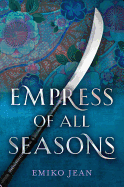
| Publisher: | Houghton Mifflin Harcourt | |
| Genre: | Fantasy, General, Romance, Young Adult Fiction, Fairy Tales & Folklore | |
| ISBN: | 9780544530942 | |
| Pub Date: | November 2018 | |
| Price: | $17.99 |
| Children's & Young Adult |
by Emiko Jean
In Honoku, humans exist alongside yōkai, supernatural beings "as limitless as the magic within them." The human emperor hates the yōkai and wants them killed or enslaved. Akira, the child of a yōkai and a human, believes neither group will ever accept him. But Mari, an Animal Wife yōkai, does accept him, and he is in love with her for it. Animal Wife yōkai are preternaturally beautiful, with the ability to transform into dangerous monsters; they "trick men into marriage and then steal their fortunes." But Mari is plain and capable of only a partial transformation, growing talons from her fingers. When it became clear that Mari would not be beautiful, her mother taught her how to fight in order to "conquer the Seasons, become Empress, and steal the prince's fortune."
Every generation, a competition is held to find an empress: the young woman who survives each of the palace's enchanted seasonal rooms wins. All of Honoku's young women (except yōkai) are eligible to compete, and Taro, the prince, is the prize. Mari travels to the palace to survive the Seasons; Akira follows her to prove his love. A chance meeting between Taro and Mari kindles a romance, and Taro, who has always been against the competition, begins to hope Mari will win. Meanwhile, Akira falls in with a group of revolutionary yōkai who are planning to assassinate the emperor.
Told in the alternating voices of Akira, Mari and Taro, Emiko Jean's (We'll Never Be Apart) Empress of All Seasons builds a lush, Japanese mythology-inspired world. The three teens are inextricably linked, each individual's fate reliant upon another's choices and so, as the stakes rise for one, they rise for them all. An enchanting, gripping novel. --Siân Gaetano, children's and YA editor, Shelf Awareness